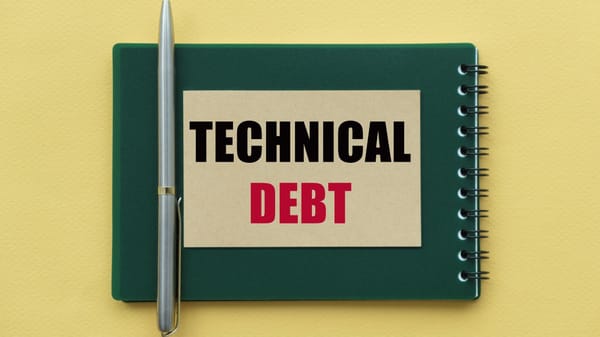Can We Scale? Yes, No, and Maybe!

One of the first questions buyers ask in diligence is simple: can this product scale? They’re not looking for a buzzword-filled answer about cloud-native microservices. They want confidence that if they double or triple your customer base, the technology will hold together without collapsing under its own weight.
The answer usually falls into one of three buckets. Sometimes it’s a clear yes. Sometimes it’s an obvious no. Most of the time, it’s a maybe. Let’s walk through what each of those looks like.
The Yes
When I tell a buyer a product can scale, it’s because the fundamentals are in place. The architecture may not be perfect, but it’s predictable. The system has already proven it can handle spikes in load. The engineering team knows where the pressure points are and has a plan for addressing them.
A scalable system usually has modular boundaries. You can add new features without having to touch the entire codebase. The database design supports growth without grinding to a halt after a few million rows. The cloud infrastructure is set up with elasticity in mind, so you aren’t paying for overprovisioned resources but you can still handle surges.
Just as important, the company has visibility into how the system behaves under stress. They’ve done load tests. They have metrics and dashboards that show where latency creeps in. They’ve tuned things proactively instead of waiting for customers to scream. When buyers see this, the conclusion is simple: yes, this product can scale.
The No
Sometimes the answer is just no. I’ve walked into diligence where the product looked fine on the surface, but a closer look revealed scaling was never part of the design. Every request funneled through a single database with no read replicas, no sharding, and no caching. Every feature was glued together in a way that meant even small increases in usage caused performance to crater.
I’ve seen companies try to hide this by throwing more hardware at the problem. It works for a while, until costs balloon and performance issues keep coming back. Buyers can spot this quickly. They’ll ask for customer growth history, infrastructure spend, and performance metrics. If infrastructure costs grow linearly with customer count, or if performance complaints are piling up in support tickets, the answer is no.
When scalability is a flat no, buyers know they’ll be inheriting major reengineering work. That usually means a lower valuation, tougher deal terms, or no deal at all.
The Maybe
Most companies fall into the maybe bucket. The product scales in some ways, but not in others. Maybe the backend services are solid but reporting queries hammer the database until things slow down. Maybe the core app can handle more users, but integrations with third parties are fragile and break under load. Maybe the product works fine today, but the architecture is starting to show stress cracks as usage grows.
In these cases, buyers look for two things. First, do you know where the limits are? If you can point to the specific bottlenecks and show how you’re monitoring them, that’s reassuring. Second, do you have a credible plan? If you can say, “Yes, reporting queries will need a separate analytics store, and here’s how we’ll get there,” then you’re in better shape than just hoping the problem never shows up.
The maybe category is where story matters. A founder who can explain the scaling path calmly and clearly usually keeps buyers engaged. A founder who looks surprised when asked about scaling signals that they don’t have a handle on their own product. That’s when a maybe starts leaning toward no.
Wrapping It Up
Scalability isn’t about having the perfect architecture or being on the bleeding edge of technology. It’s about predictability. Buyers want to know that growth won’t immediately trigger outages, customer frustration, or massive infrastructure costs.
If you want to be in the yes bucket, make sure you understand your architecture, monitor how it behaves under load, and build a roadmap for the next stage of growth. If you’re in the maybe bucket, be ready to tell a clear story about the bottlenecks you know exist and how you’ll address them. If you’re in the no bucket, recognize that buyers will factor the cost of fixing it into the deal.
The question “Can we scale?” is one of the most important in diligence. Make sure you can answer it honestly and with evidence. Buyers don’t need perfection. They need confidence that your product will support the growth they’re betting on.




